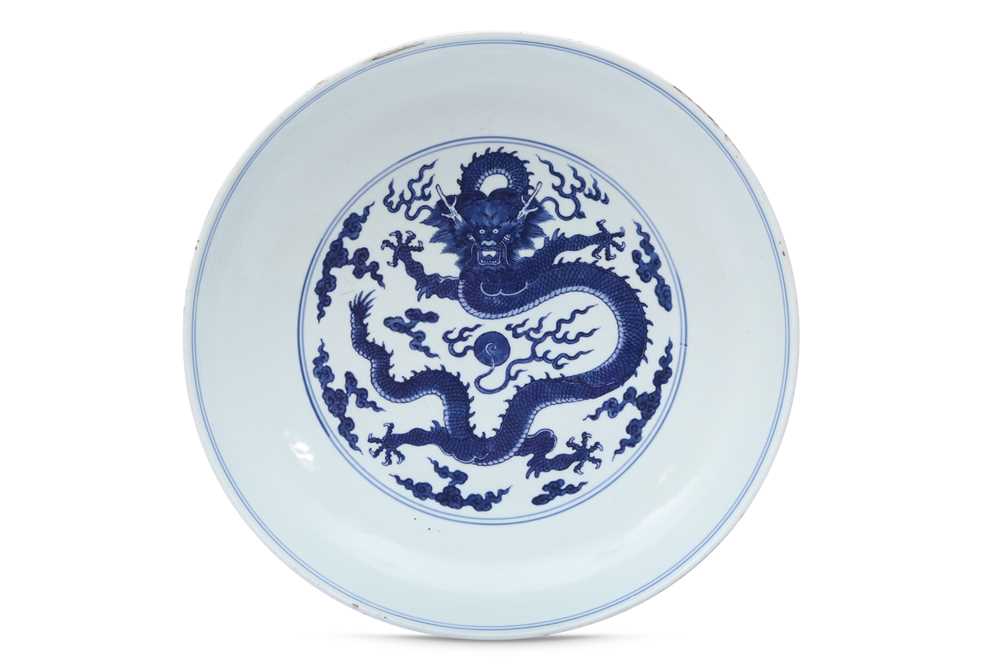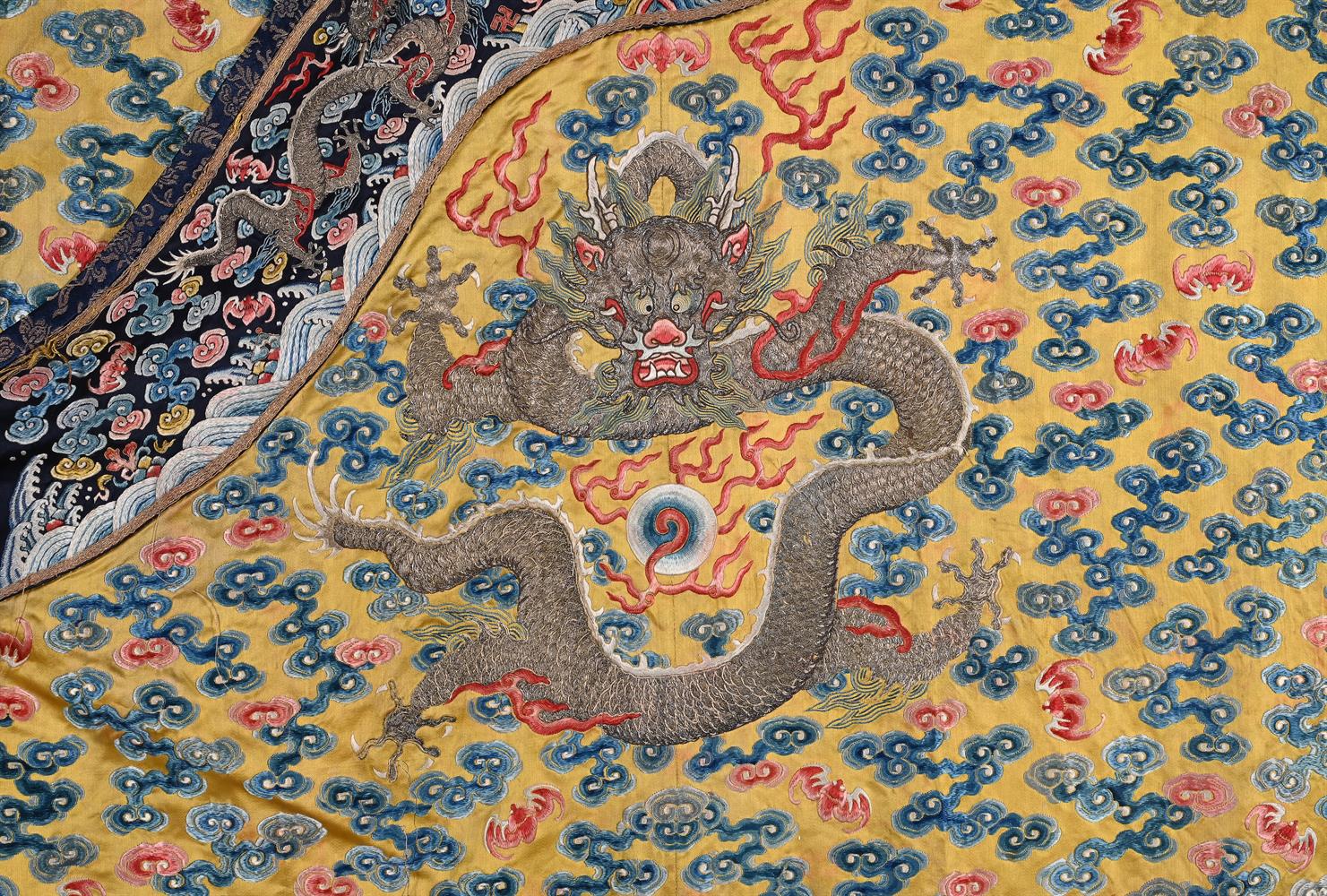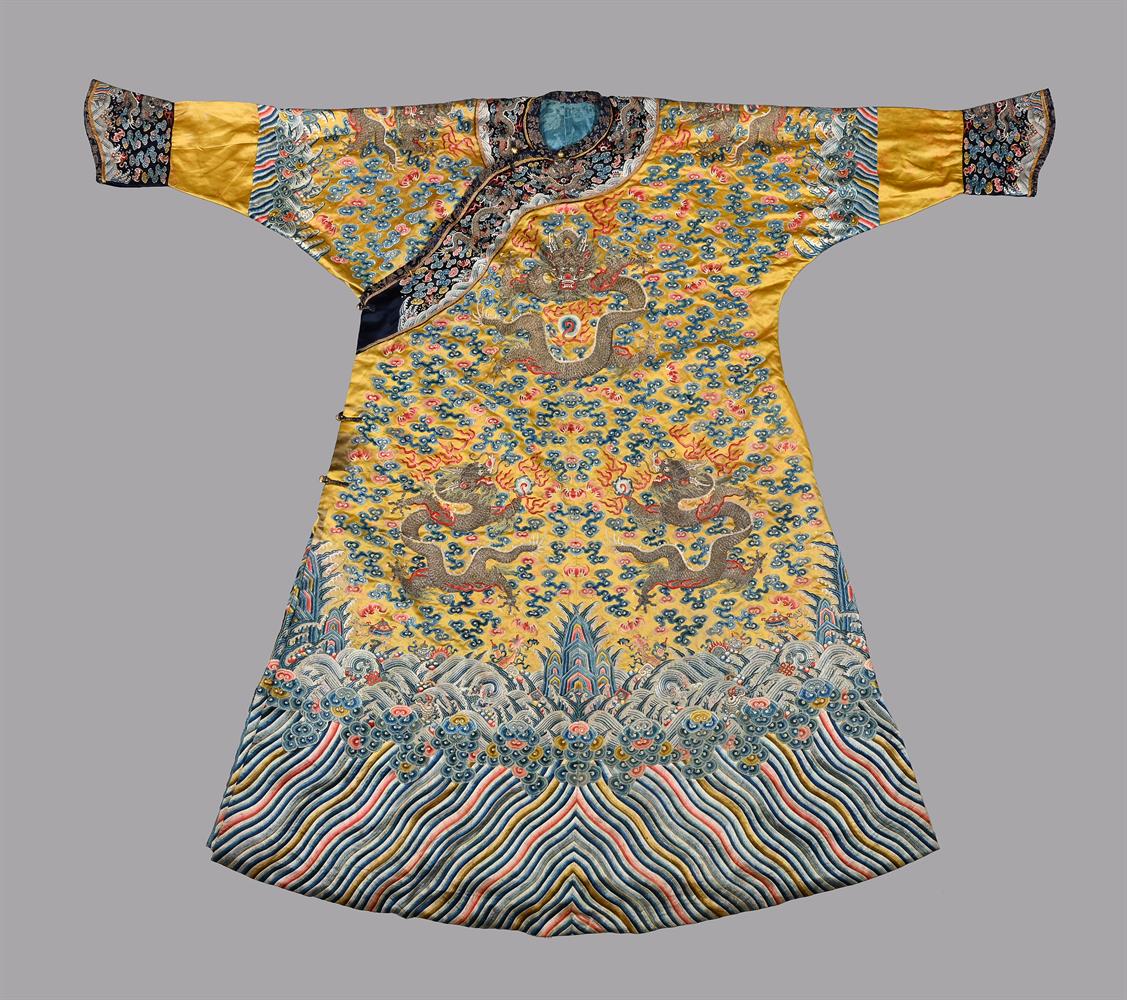A Rare Chinese Imperial qiangjin and tianqi Red Lacquer Altar Table, Qing dynasty, 17th/18th century, 156.5cm wide, 63cm deep, 88.5cm high. Decorated in red, brown, black and gold. The rectangular top finely incised to depict a large central panel of two confronting phoenix amidst scrolling peony flowers, leaves and tendrils. The panel is bordered by forty-one flying bats, the whole enclosed by a design of further flowers and foliage with a cockerel-headed mythical beast to each corner, all within a key fret edge. The frieze is decorated with a band of panels containing bats and swastikas above a pattern of bats, cloud scrolls and shou characters; the reverse, sides and legs with similar designs. A modern plate glass top. Provenance Sackville, 5th Earl of Yarborough. The Earl used this table to display the fine green jade water buffalo and gilt stand from the Earl's collection, which was sold in these rooms in May 2009. The Earl's Will contains the following excerpt: To my dear elder daughter, Diana Mary, the Red Lacquer long table and the settee to match, which stand in the front hall at Brocklesby, and the antique Chinese green jade buffalo in the same room... Paper collection label to the underside. Catalogue note Qiangjin is a decorative technique in which the incised outlines of the design are etched, and filled in gold, and tianqi (filled in) where the different colours of the lacquer are used for decorative effect against the coloured ground. For details of the history and development of this technique, cf. The Luxury of Chinese Lacquer, Littleton and Hennessy, March 2010 Introduction. The decorative design used is particularly auspicious. Terese Tse Bartholomew in her Hidden Meanings in Chinese Art states that 'The phoenix is the emperor of all birds, and like the qilin, it appears only in times of peace and prosperity. It is believed that the phoenix's appearance in China augers the emergence of an able ruler or the arrival of a great man, for it appeared when Confucius was born. The phoenix is the motif for the empress of China, ornamenting her crown as well as her clothing….. Phoenix (feng) and peony (fuguihua) = may there be wealth, rank and good fortune (fugui jixiang). The phoenix dallying with the peony is an auspicious design (fengxi mudan, fengchuan mudan). When the king of birds is paired with the king of flowers, together they augur great blessings.' Cf. Imperial Furniture of the Ming and Qing Dynasties, Classics of the Forbidden City, pp.152 & 155, nos.172, 175 and 176 for related examples; see also Soame Jenyns, & William Watson Chinese Art II, p.238, no.176, The Collection of Lord and Lady Fairhaven; and a related pair of open armchairs in the Victoria and Albert Museum. See also, Chinese Furniture, Selected articles from Orientation 1984-2003, p.343. and The Minor Arts of China IV, Spink & Son Ltd, p.15, no.5 for a pair of kang tables decorated in this technique.
A Rare Chinese Imperial qiangjin and tianqi Red Lacquer Altar Table, Qing dynasty, 17th/18th century, 156.5cm wide, 63cm deep, 88.5cm high. Decorated in red, brown, black and gold. The rectangular top finely incised to depict a large central panel of two confronting phoenix amidst scrolling peony flowers, leaves and tendrils. The panel is bordered by forty-one flying bats, the whole enclosed by a design of further flowers and foliage with a cockerel-headed mythical beast to each corner, all within a key fret edge. The frieze is decorated with a band of panels containing bats and swastikas above a pattern of bats, cloud scrolls and shou characters; the reverse, sides and legs with similar designs. A modern plate glass top. Provenance Sackville, 5th Earl of Yarborough. The Earl used this table to display the fine green jade water buffalo and gilt stand from the Earl's collection, which was sold in these rooms in May 2009. The Earl's Will contains the following excerpt: To my dear elder daughter, Diana Mary, the Red Lacquer long table and the settee to match, which stand in the front hall at Brocklesby, and the antique Chinese green jade buffalo in the same room... Paper collection label to the underside. Catalogue note Qiangjin is a decorative technique in which the incised outlines of the design are etched, and filled in gold, and tianqi (filled in) where the different colours of the lacquer are used for decorative effect against the coloured ground. For details of the history and development of this technique, cf. The Luxury of Chinese Lacquer, Littleton and Hennessy, March 2010 Introduction. The decorative design used is particularly auspicious. Terese Tse Bartholomew in her Hidden Meanings in Chinese Art states that 'The phoenix is the emperor of all birds, and like the qilin, it appears only in times of peace and prosperity. It is believed that the phoenix's appearance in China augers the emergence of an able ruler or the arrival of a great man, for it appeared when Confucius was born. The phoenix is the motif for the empress of China, ornamenting her crown as well as her clothing….. Phoenix (feng) and peony (fuguihua) = may there be wealth, rank and good fortune (fugui jixiang). The phoenix dallying with the peony is an auspicious design (fengxi mudan, fengchuan mudan). When the king of birds is paired with the king of flowers, together they augur great blessings.' Cf. Imperial Furniture of the Ming and Qing Dynasties, Classics of the Forbidden City, pp.152 & 155, nos.172, 175 and 176 for related examples; see also Soame Jenyns, & William Watson Chinese Art II, p.238, no.176, The Collection of Lord and Lady Fairhaven; and a related pair of open armchairs in the Victoria and Albert Museum. See also, Chinese Furniture, Selected articles from Orientation 1984-2003, p.343. and The Minor Arts of China IV, Spink & Son Ltd, p.15, no.5 for a pair of kang tables decorated in this technique.















Try LotSearch and its premium features for 7 days - without any costs!
Be notified automatically about new items in upcoming auctions.
Create an alert